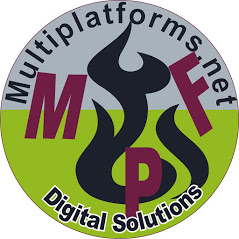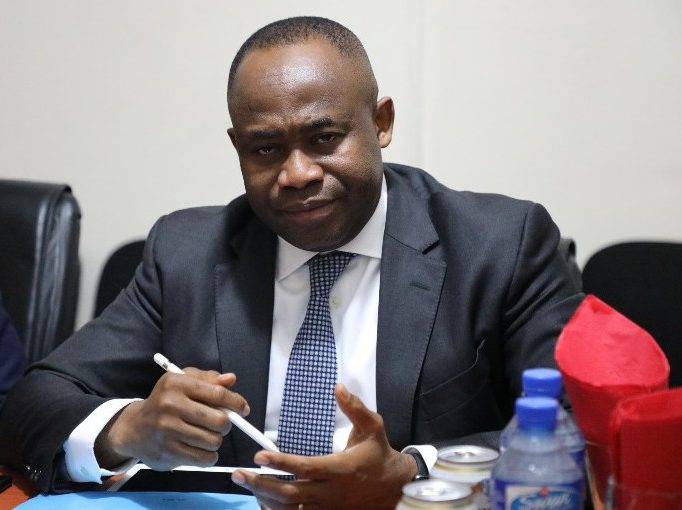Through time, the country and by extension, the market, had been crippled by an infrastructural deficit that cut across all sectors. With each administration, attempts to handle it was done in half steps or without political will.
However, recently, the Nigerian Sovereign Investment Authority (NSIA), has begun to champion change through interventions that are sustainable. Aside that, the authority, which manages Nigeria’s autonomous wealth fund, are also
Collaborating with all the newly-established Infrastructure Company (Infra-Co) to help the business achieve optimum results from its mandate.
Addressing Infrastructural Deficit
It is also involved in building three major legacy jobs’ function as 127.6-kilometre Lagos-Ibadan expressway, 45-kilometer next Niger bridge as well as the 375-kilometer Abuja-Kano highway.
According to the Managing Director of NSIA, Mr Uche Orji said;”On the street projects, I have talked about the probability of this SUKUK finance, but operationalising the roads, finishing the concession arrangements for these streets and funding plans for the roads are extremely important, since I expect them to now start turning it into particular companies.
“The federal government set up the Presidential Infrastructural Development Funds to cover the financing needs of the 3 jobs. The aim of finishing them is to make them economically viable everywhere from 2022 into 2023.
“Around Lagos-Ibadan Expressway, I know some people are still fighting with that, but you may also attest to the fact that a lot of progress was made. We’re over 60 per cent completed, I believe 63 per cent on Lagos-Ibadan Expressway. I think we should be able to finish that project by the end of 2022.
“On the Second Niger Bridge as at the end of the year (2020), we had been about 53 per cent completed. I am hoping by the end of this year, we’ll have finished the decking of the bridge. So, at the conclusion of this year, I’m hopeful that we can see a bridge.
“The initial scope to the Abuja-Kano road is going to be achieved a year ago, the new extent, the Ministry of Works will give an update. So, all of these jobs are moving at speed. Let me emphasise, these are going to be commercial financial corridors. There will be toll roads, trailer parks, there will be all kinds of things that are likely to be added to these roads to be certain they earn revenue.”
Essential to those projects are funding. On this, Orji further hinted at the NSIA strategy to elevate a SUKUK to tackle some of the funding concerns of this project. In addition, it had been noted that the recently recovered $311 million Sani Abachi loot by the United States and the Island of Jersey is going to be steered into the 3 projects on an equivalent basis.
Thus far, the Second Niger Bridge has gulped N116.7 billion as it is estimated to cost N414 billion. The Lagos-Ibadan Expressway will price the FG N311 billion while on the Abuja-Kano Highway, the authorities will invest N797 billion.
Another significant infrastructural development being undertaken by NSIA is Nigeria’s First Ammonia and Diammonium phosphate plant in Akwa Ibom State at an estimated price of $.14 billion.
Read Also: Nigeria mulls exit from some International organisations – Onyeama
Essentially, the MoU comes beneath NSIA Gas Industrialisation Strategy and could drive implementation of the Multipurpose Industrial Platform project. The project is organised to commercialise Nigeria’s huge natural gas resources and fulfill Morocco’s requirement for cost-competitive ammonia.
But $1.4 billion will be invested in building out the plant and its supporting infrastructure with a goal operations-commencement date of 2025.
On this, the NISA manager noted that raising the finance for the project would be simple in view of the current liquidity degree at both the domestic and the global debt markets.
Explaining further, he said the NSIA had planned to raise $400 million from equity and $1 billion in debt instruments but changed the strategy because it now has over $500 million attention from equity interests. According to Orji, the jurisdiction will raise only $900 million in the debt on the overpowering equity pursuits seen from the jurisdiction.
He said:”It might be $900 million, it may be a thousand and that’s simply because the equity portion of the fund is seeing more attention now than we had planned. So there are a lot of folks asking to have the opportunity to invest in equity. The original arrangement was for us to have roughly $400 million of equity and a thousand dollars of debt.
“But at the moment we’ve got over $500 million of equity interest. We might just for efficacy purposes restrict it to this and $900 million dollars of debt. Where are we going to raise that? It’s very straightforward. There’s plenty of liquidity in the market right now. We are having to make a choice as to who will be the underwriter. And if you step back and take a look at the transaction itself, you have a 100 per cent off-take ensured and therefore it’s simple to fund jobs like that.
“I think we’re feeling very confident that somewhere in the global market and local market we will have the ability to raise the debt”
The NSIA boss disclosed that far, there hasn’t been agreement yet on the stake of the state-owned petroleum corporation in the venture.
“It has not been agreed. Right Now, the partners that the OCP and the Nigerian Sovereign Investment Authority and NNPC are indicating interest in local content. However, I think in the present time, the original partners are NSIA 50 percent OCP 50 per cent at the development stage and will acknowledge other equity partners shortly which will include the NNPC, but the ideal parts have not been agreed between the parties”.
To boost infrastructural growth in the healthcare sector, especially in the wake of COVID-19 pandemic, the NSIA contributed 126 units of Patient Monitors and 63 units of Oxygen Concentrators to 21 health care institutions over the six geopolitical zones of the country.
The transfer is part of the COVID-19 relief programmes. With the country’s economy still in recovery, the aid gear is expected to increase the present stock of crucial medical equipment required for the containment of the virus in Nigeria. The supply of oxygen concentrators and individual monitors is expected to boost government’s efforts to supply an efficient and effective healthcare response for all those affected by the virus.
Read Also: Senate moves to place NSIA on 20% first line charge from all revenues accruable to the Federation Account
The shortage of oxygen concentrators and patient screens had slowed the government’s skill in providing an efficient and effective health care response for those affected by the virus during the initial wave of the pandemic.
He said, “We all know that our nation is at war with this pervading enemy and we will ensure that the virus won’t spread further. We are happy that the NSIA has helped in providing these facilities and this gear is a welcome improvement. It could not have come at a better time.”
He billed the healthcare centers that got the facilities to ensure they are deployed in a way that would help to save the lives of Nigerians, adding that”this government will continue to come up with steps to stop the spread of the virus. We can’t halt the spread if we don’t take responsibility. To those in doubt, COVID-19 is real, wear your face mask, maintain social distancing and if it’s possible, do not travel. I want us to treat everyone as a possible provider of COVID-19″.
Still, on healthcare, the power operationalised the NSIA-Kano Diagnostic Centre; operationalised the NSIA-Umuahia Diagnostic Centre and Commissioned Administrative and Training centre for the NSIA-LUTH Cancer Centre.
Additionally, it commenced a strategy to roll out extra healthcare projects across the country, as they partnered University College London Consult to come up with a pharmaceutical investment plan with a plan to develop active direct investments in 2021.
On this, the Minister of Finance, Budget and National Planning, Mrs Zainab Ahmed, commended the NSIA board for supplying the equipment, including that through this deadline, the authority has been able to demonstrate that investment in healthcare is an investment in the economy as it guarantees greater yields, including that”I wish to promote the NSIA to keep its aid in the healthcare sector. The gear will help to offer succour to households affected by COVID-19″.
Scorecard
In the midst of all of the infrastructural renewal going on, penultimate week, the NSIA released its 2020 performance scorecard that revealed that its total assets climbed to N981.78 billion in 2020, at some time its counterparts across the world are limping.
They blamed the growth of assets to the subject, strategic financial implementation and consistent execution of well-defined infrastructure investment programmes for the year.
It further afield the COVID-19 storm owing to solid performance from the own investments in global capital markets, improved participation from subsidiaries and affiliates and exchange gain from foreign currency positions
Highlights of NSIA’s activities and performance during the interval demonstrated that they recorded 343 per cent growth in Total Comprehensive Income to N160.06 billion in 2020 as against N36.15bn in 2019. Excluding devaluation profit of N51 billion, heart income of N109bn was listed in 2020 in comparison to N33.07 billion in 2019.
The NSIA also received an additional donation of $250 million; and provided first stabilisation support to the federal authorities where $150 million was withdrawn in the Stabilisation Fund. Also, to handle the ongoing pandemic, Orji said the NSIA partnered the Global Citizen, a not-for-profit group, to form the Nigeria Solidarity Support Fund.
In nature, with all it has achieved and what it still aims to capitalise on, the power isn’t slowing on its oars to renew the infrastructural deficit across board.
![]()


